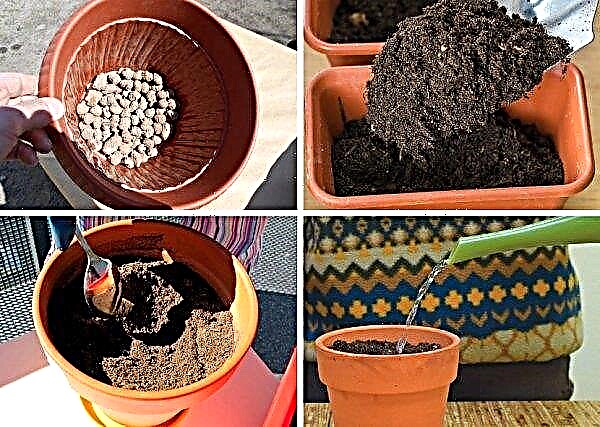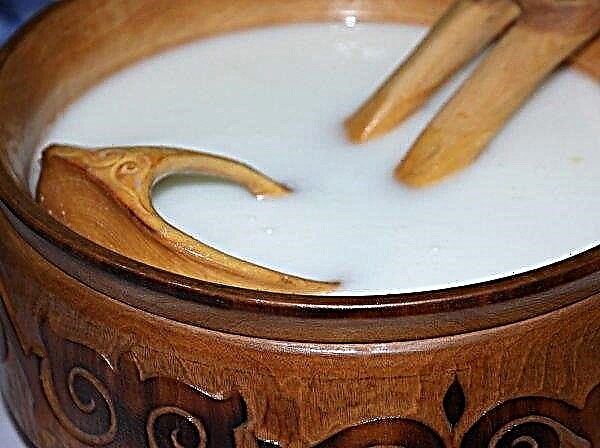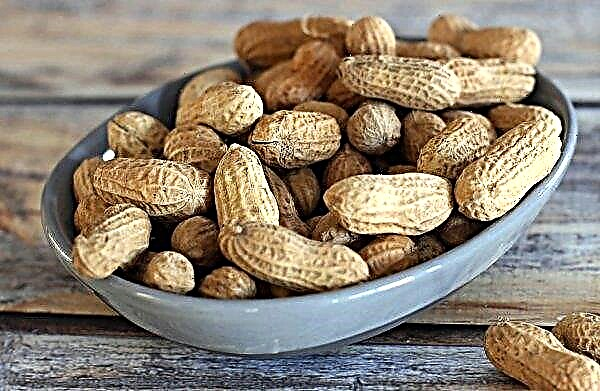Luxurious and vibrant hydrangea flowers adorn the room from early spring to late autumn. Such a long flowering period greatly depletes the plant, so it needs a good winter rest. In this article, you will learn how to take care of home hydrangea in the fall and winter.
Care for hydrangea in the fall
Autumn care for room hydrangea is to prepare a flower for wintering. Without this preparatory stage, the plant will not be able to rest qualitatively and gain strength for flowering next year. Preparing for rest means a reduction in such mandatory spring and summer activities as watering and feeding. In autumn, it is also necessary to prune and transplant the flower.
Watering
Hydrangea has another name - hydrangea, which means "tub with water." From this it is clear that the plant is very fond of moisture. And, indeed, in the warm season, it needs frequent and plentiful watering. But with the end of flowering, the situation changes, as the need for moisture decreases.
Did you know? Large-leaf hydrangea is able to change the color of the petals. Their color is affected by the acidity of the soil: white buds bloom on neutral soil, pink buds on slightly acidic, and blue and lilac buds on acidic.
Autumn watering comes down to slightly moistening the earth when its top layer dries. Tap water is not suitable for this purpose. It should be room temperature, settled, melt or rain.
Top dressing
In February, the plant begins an active process of vegetation. First, it builds up green mass, then blooms violently. All this time, the flower needs nutrients, therefore, starting in February, fertilizers must be applied twice a month. Fertilizers for indoor flowering plants (rhododendrons or azaleas) are perfect for this purpose. But after flowering, the flower's activity decreases, so feeding should be stopped until the next season.
Pruning
Indoor hydrangea, like street hydrangea, needs pruning. In autumn, after the bush fades and discards all the foliage, it needs to completely remove weak and damaged shoots.
Important! If the leaf fall time has passed and the leaves still hang on the branches, then they should be removed during pruning.
It is necessary to leave 5-6 of the strongest stems, which also need to be halved. This procedure helps the plant enter dormancy. Thanks to this pruning, a lush healthy bush will form in the new season and large bright flowers will be tied.
Transfer
Hydrangea loves to be transplanted every year, and thanks for this with luxurious inflorescences. The best time for transplanting is autumn, after the plant has bloomed and was pruned. The root system grows in breadth, so the pot for growing hydrangea should be chosen not very deep, but wide. It should be about 1.5 times the previous capacity. The bottom is necessarily filled with drainage from crushed stone. A suitable substrate has the following composition: sand, peat, leaf and turf land (0.5: 1: 1: 2). If there is no sod land, then ½ part of the humus can be added to the mixture.
Important! Do not worry if the variety with pink buds in the new season bloomed with blue flowers. So the soil is more acidic than necessary. If desired, acidity can be reduced by adding lime or ash to the ground.
Landing is carried out by transshipment method:
- Carefully remove the bush with an earthen lump from the old pot and place in a new one.
- Fill the voids with the prepared substrate.
- Tamp the earth. Make sure that the root neck remains above the surface.
- Water well. You can mulch the soil with peat so that moisture persists in the pot.
 A newly transplanted plant is very vulnerable. It must be placed away from direct sunlight and drafts.
A newly transplanted plant is very vulnerable. It must be placed away from direct sunlight and drafts.Winter Home Hydrangea Care
Winter care for room hydrangea is to create optimal conditions for rest in the house. All manipulations with the flower cease. If the plant does not rest enough, it will affect the quality of flowering, or it will not be at all.
Did you know? In Japan, where hydrangea by birth, flower called "adzisai", which translates as "purple sunny flower."
Rest period
For a sufficient rest, hydrangeas will need more than 2 months (70–80 winter days). Slowing down the life processes of a plant begins after flowering and leaf fall, so you can send a flower for wintering in December and awaken in February.
Light mode
Hydrangea has no special lighting requirements. The main thing is that direct sunlight does not fall on it. During dormancy, it is advisable to remove the plant into a dark room or shade so that it can fully relax. If there is no dark place in the apartment, it will be enough to put the pot in the darkest corner, away from the window. During winter dormancy, lighting is not of particular importance.
Temperature
Much more important than lighting is compliance with the temperature regime. Room temperature should vary according to seasonal changes. In the warm season, the room should be warm (+ 19 ... + 22 ° С), and in the winter - cool (+ 5 ... + 12 ° С). It is best to put the pot with the sleeping plant in the driest and coolest place in the house: in the cellar, basement or on the glazed loggia. An unheated room is also suitable. At the end of the winter holiday, in February, the flower for awakening needs to be moved to a warmer room, gradually raising the temperature in it.
Watering
During dormancy, hydrangea hydration is minimized. In the basement and cellar, watering is completely stopped. If the flower stays for the winter in a room where the air is drier, you need to control the humidity level in the pot. If the soil is dry, it needs to be slightly moistened. Drying of an earthen coma should not be allowed.
How to keep in a pot until spring
There is nothing complicated in preserving hydrangea until spring.
To do this, follow a simple scheme:
- in autumn, complete all preparatory steps: gradually reduce watering, stop feeding, cut the plant and transplant it into a new pot;
- create optimal conditions for wintering: store the pot in a cool, dry and dark place.

Many flower growers have seen from their own experience that growing hydrangea home is not at all difficult. It is important to understand how much winter peace is needed for a plant. With a caring and attentive host, the grateful plant will bloom until late autumn.












